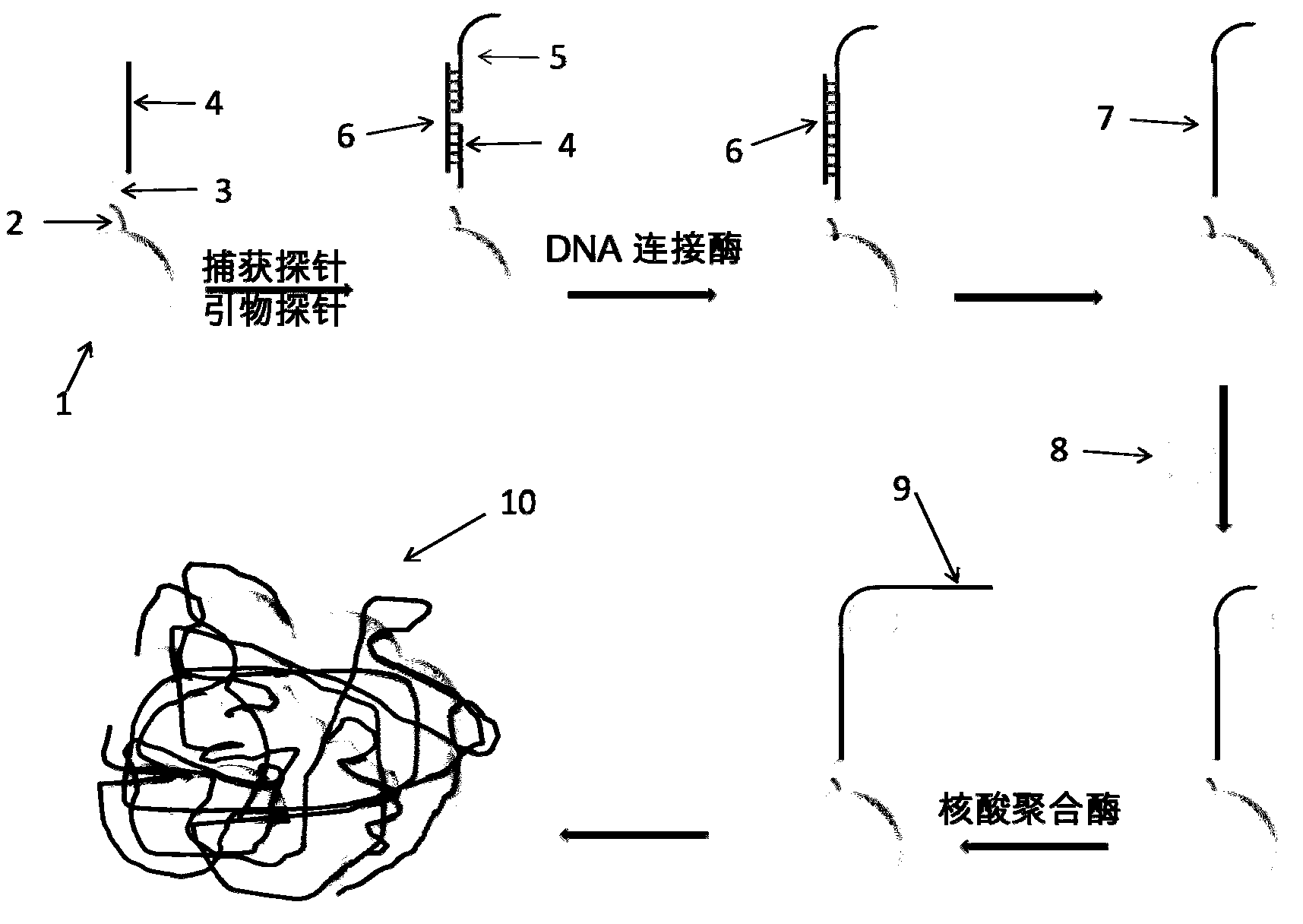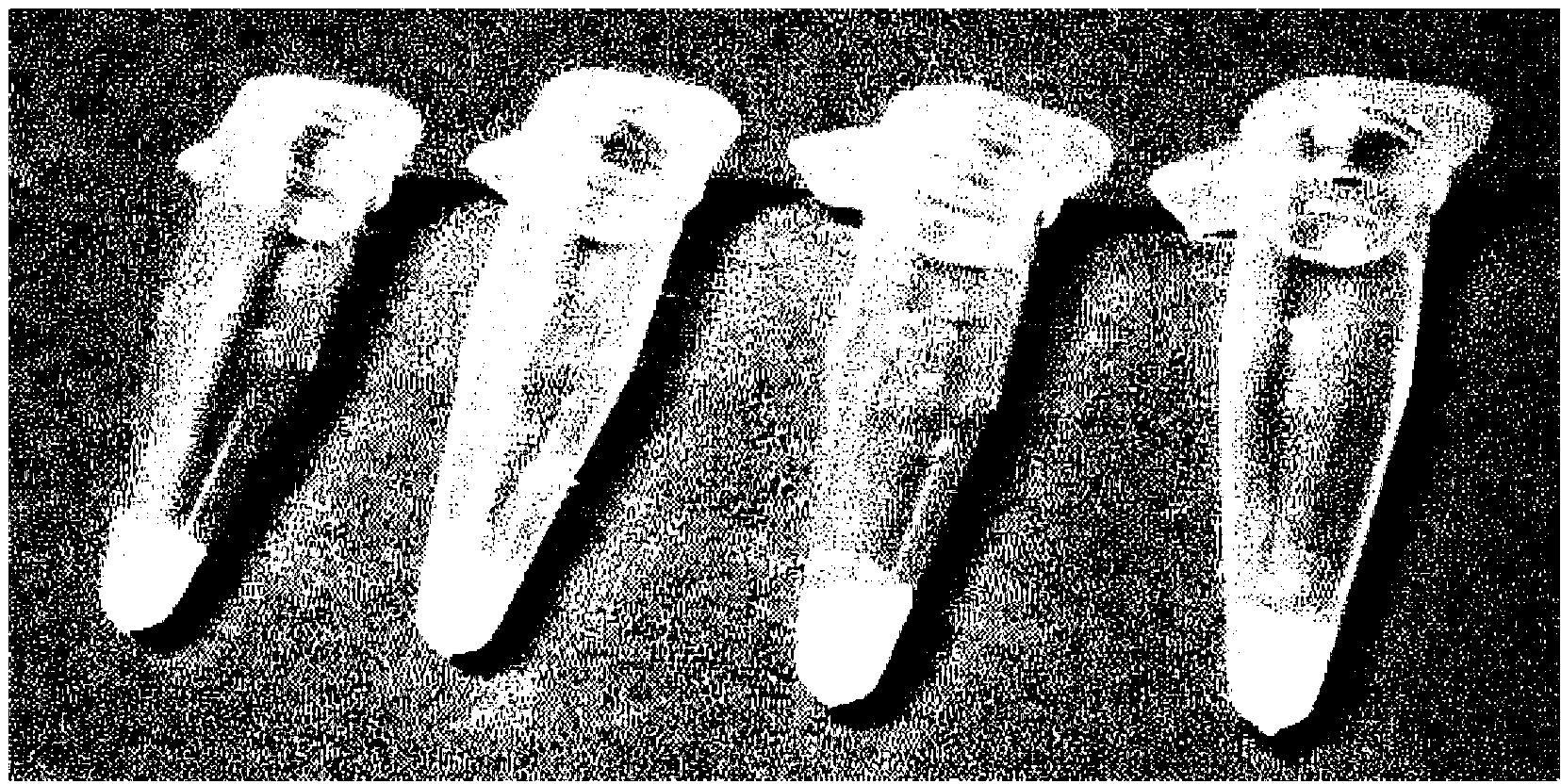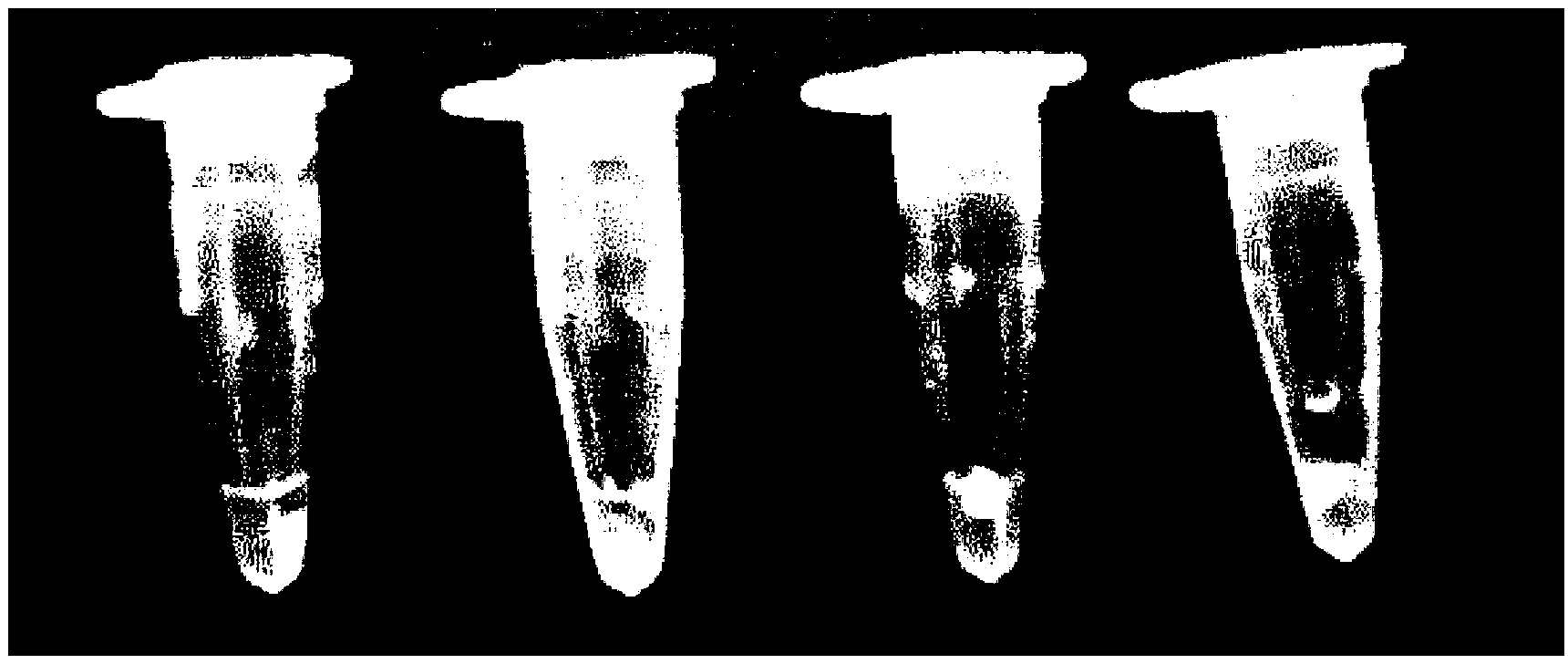Nucleic acid qualitative detection method based on nano-particles and rolling circle amplification
A rolling circle amplification and nanoparticle technology, which is applied in biochemical equipment and methods, and the determination/inspection of microorganisms, can solve the problems of high cost of nanoparticles and high cost of fluorescent probes, and achieves fewer steps, lower costs, and experimental results. simple method effect
- Summary
- Abstract
- Description
- Claims
- Application Information
AI Technical Summary
Problems solved by technology
Method used
Image
Examples
Embodiment Construction
[0029] The method for qualitative detection of nucleic acid molecules by performing rolling circle amplification on the surface of nanoparticles will be further described below in conjunction with specific examples.
[0030] 1. Design and synthesis of detection probes
[0031]
[0032] 2. Modification of capture probes on the surface of nanoparticles
[0033] 1) Take 80ul of silica nanoparticle solution (10mg / ml), centrifuge at 10000rpm / min for 3min, discard the supernatant, wash with washing / binding buffer three times, each time with 80ul, centrifuge at 10000rpm / min after washing, 3min, add 16ul washing / binding buffer after the last centrifugation;
[0034] 2) Add 4ul capture probe solution (100uM) to the above particle solution, place it on a constant temperature oscillating metal bath, react at 25°C for 1h, and wash twice with Washing / binding buffer after the reaction is complete.
[0035] 3. Capture probe, primer probe hybridization
[0036] 1) Add 10ul of target nuc...
PUM
| Property | Measurement | Unit |
|---|---|---|
| diameter | aaaaa | aaaaa |
Abstract
Description
Claims
Application Information
 Login to View More
Login to View More - R&D
- Intellectual Property
- Life Sciences
- Materials
- Tech Scout
- Unparalleled Data Quality
- Higher Quality Content
- 60% Fewer Hallucinations
Browse by: Latest US Patents, China's latest patents, Technical Efficacy Thesaurus, Application Domain, Technology Topic, Popular Technical Reports.
© 2025 PatSnap. All rights reserved.Legal|Privacy policy|Modern Slavery Act Transparency Statement|Sitemap|About US| Contact US: help@patsnap.com



